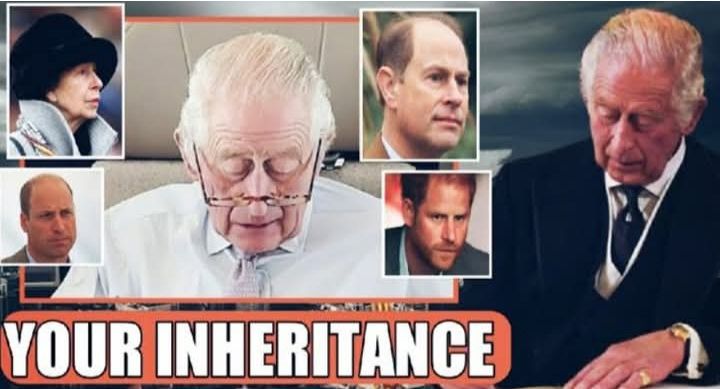CELEBRITY
KING’S WILL UNVEILS! King Charles REVEALS INHERITANCE Benefits Of Each Royal! NEW KING CHOSEN…

KING’S WILL UNVEILS! King Charles REVEALS INHERITANCE Benefits Of Each Royal! NEW KING CHOSEN…
When King Charles III ascended to the throne following the death of his mother, Queen Elizabeth II, the world watched as the monarchy entered a new era. The shift in leadership brought with it questions not just about the future of the monarchy, but also about the inheritance and distribution of assets within the royal family. King Charles, now the head of the British royal family, has a unique position, not only as monarch but also as the patriarch of a family that is traditionally wealthy, with vast estates, art collections, and other holdings that have been passed down through generations.
**The Royal Inheritance System**
The British monarchy is known for its immense wealth, which includes royal estates, palaces, artworks, and land holdings spread across the United Kingdom. However, unlike most aristocratic families, the monarchy doesn’t operate under typical inheritance laws. Instead, royal inheritance is heavily influenced by tradition, custom, and legal frameworks that have evolved over centuries.
The royal family’s wealth is generally tied to the Sovereign Grant, a public fund provided by the British government to support the monarchy’s official duties. This grant is used to cover operational costs, including salaries, travel, and maintenance of royal residences. Additionally, the royal family also enjoys private wealth passed down through generations, which is held in various private estates such as Sandringham House and Balmoral Castle, both of which were privately owned by Queen Elizabeth II.
**King Charles’ Inheritance: What to Expect**
King Charles III inherited a significant amount of wealth following his mother’s passing. His inheritance is thought to include both the private estates mentioned above, as well as the royal collections that contain priceless artifacts, art, and royal memorabilia. It is important to note that much of the monarchy’s wealth is tied up in these assets and cannot be easily liquidated or divided in the way a typical inheritance might be.
For King Charles, the key inheritance will be the royal residences, including those with historical significance. Sandringham House, for instance, has been the private residence of the royal family since 1862, and Balmoral Castle in Scotland is another personal retreat that is held privately. These properties are considered to be part of the private estate, and their ownership typically passes down within the family. Additionally, King Charles may inherit various personal items, such as family heirlooms, jewelry, and works of art, which are also part of the royal collection.
**The Future of the Royal Wealth and Family Inheritance**
As King Charles begins his reign, questions of how the royal family’s wealth will be managed and distributed in the future are inevitable. As monarch, King Charles holds immense responsibility not just for the public duties of the crown, but also for the long-term preservation and management of the royal family’s wealth.
It’s speculated that King Charles will likely take a more modern and less traditional approach to managing the royal assets, potentially making some changes in how these assets are passed down to future generations. There are whispers of potential changes in the way the family estate is handled, particularly in terms of its operation and use. For example, Sandringham House and Balmoral may continue to be passed on to Charles’s children, with a more structured approach to how the royal wealth is shared among the family.
**Inheritance and the Next Generation: William and Harry’s Future**
The next generation, particularly Prince William and Prince Harry, are also key figures when it comes to the future of the royal inheritance. Prince William, as the heir to the throne, is expected to inherit a significant portion of the royal wealth upon his father’s passing. This may include titles, estates, and properties, but also the responsibility of being the future monarch. Meanwhile, Prince Harry, who stepped back from royal duties in 2020, may not be entitled to the same level of inheritance, though his position as a son of the king still grants him access to various royal assets.
There has been some speculation about how the distribution of assets might affect the relationship between the brothers, especially given their public disagreements and Harry’s decision to distance himself from royal duties. However, the specifics of royal inheritance will be influenced by King Charles’s personal decisions and the family’s traditions, which have evolved over time to accommodate modern realities.
**A Changing Monarchy: Will Inheritance Rules Evolve?**
While King Charles inherits many of the same responsibilities as his mother, there may be a shift in how the royal wealth is managed. As the monarchy becomes more modernized and transparent, there is growing public interest in how the royal family manages their wealth and inheritance. King Charles may opt for changes that reflect the current times, such as creating more public-facing initiatives












